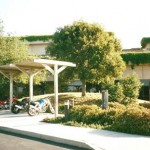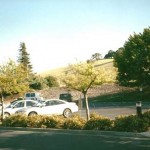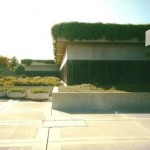Parc life
This is an edited and extended version of an article first published in Computing, 11 May 2000
Palo Alto Research Centre, Parc, opened in July 1970 on a bucolic hill overlooking Silicon Valley, before it was called Silicon Valley. The valley, once dominated by agriculture but now crowded with the suburban sprawl that makes up the world’s greatest cluster of IT businesses, was injected with silicon by Parc’s Ears project: Ethernet, Alto, Research character generator and Scanning laser output terminal. The four components of Ears created a network, a computer for one person, a memory buffer for a printer and a laser printer, all invented nearly from scratch. Together, they set the template for the billions of personal computers produced since.
This is a story of a techie Eden, created by photocopier monopolist Xerox to provide research and development for SDS, a software acquisition that rotted on the branch after it had been bought.
What did materialise from the acquisition was a series of inventions that have defined personal computing as we understand it. But Xerox never cashed in on its incredible opportunities. “Xerox could have owned the entire computer industry today,” proclaimed Apple chief executive Steve Jobs in 1996.
The wealth of inventions from Parc was made possible by the brilliance of its managers’ contact books, and a recession that made computer geniuses a dime a dozen. The centre was able to hire the cream of a generation, just when everyone else was laying off staff.
Furthermore, computers were moving from the province of white-coated scientists to almost cool. “Ready or not, computers are coming to the people,” announced Rolling Stone magazine of Parc in 1972, describing this as “maybe the best news since psychedelics”. The article, titled ‘Spacewar’, describes Parc as “an idyll, a new building high on an oak-savannahed golden foothill in Stanford’s industrial park in Palo Alto, California, a blue-skied shimmery threatless landscape”.
The centre moved into a bigger building in 1975 – a three-tiered construction with wide patios, tree-filled courtyards and plants flowing over the edge of each level. Its east-facing rooms looked across a wide valley forested with Mediterranean trees, with the steep hills of the East Bay in the distance. Parc is still there, in a place fit for dreaming.
David Biegelsen joined the General Science Lab of Parc from the outset, and never left. On his first visit, he noticed an olive tree in one of the courtyards. “We’d just moved here. It looked like free food – like a milk and honey situation,” he says. Right on cue, a squirrel runs past his ground-floor office window. The olive, however, was horribly acidic. “It was classically stupid,” he recalls, 30 years later. “This was before acid became popular for other reasons.”
Parc’s reputation, from ‘Spacewar’ onwards, is of a rather anarchic place, where meetings took place on beanbags in a drug-infused air. “I think this counter-culture thing is greatly exaggerated,” says Biegelsen. “There was a sense among some people of counter-culture, but Butler Lampson [one of the key researchers on Ears] and Bob Taylor [associate manager of the Computer Science Lab] were as straight as people come. The notion of beanbags and smoking pot was actually a very mild foray into the counterculture – it was actually pretty straight-laced.” Parc’s management were furious at the Rolling Stone article, and tightened security – the journalist concerned had wandered around unaccompanied.
Steve Putz, another lifer, thinks the Parc of the 1970s did have an unusual atmosphere. “The character of the place was informal and playful,” he recalls. He first entered Parc as a teenager to help test the groundbreaking object-oriented Smalltalk language. “Even as a 15 or 16 year old, it felt like I was part of this group. We’d go for picnic lunches in the park across the street, and go on outings.” Putz recalls Alan Kay, who invented the concept of the idealised Dynabook portable computer and recruited like Steve kids to test Smalltalk: “I just remember him always having this energy, with a big smile and excitement in his face – that boyish enthusiasm.” It must have rubbed off: after university, Putz returned full-time and never left.
There were several lab groups originally, although they have been shuffled and more tightly integrated since. Biegelsen says the idea that these different labs within Parc shared a common culture is a myth. “The Computer Science Lab was well-known for Lampson and Chuck Thacker [designer of the Alto, the first PC] who were geniuses, but… I wouldn’t use the word arrogance, it was more an outspokenness. They were very honest and probing, and we were very genteel.”
It was the interaction between divisions and disciplines that made some of the greatest advances possible. Biegelsen helped Gary Starkweather, who was working for the Systems Science Lab, complete the world’s first laser printer by advising him that sound could be used to move the gas laser’s beam. This structure also allowed Parc to chase the vision of personal computing at different levels. While the Computer Science Lab worked on the Alto, Ethernet and the Bravo word-processor, the Systems Science Lab worked on Smalltalk and the laser printer. Meanwhile, Biegelsen’s department, the General Science Lab, pioneered amorphous silicon. This can be deposited onto glass to produce solar cells, or drivers for a liquid crystal display – technology that would be required to produce the Dynabook, which was to be dominated by a large thin screen.
In the early days of Parc, the researchers refused to buy a computer from Xerox’s failing technology subsidiary, and when barred from buying a competitor’s product, they just cloned it themselves. Now, walking along Parc’s corridors, you keep coming across prodigiously well-equipped printer rooms, featuring eight-foot long photocopiers (sorry, “Document Centres”). They are not manufactured by Xerox’s competitors. “The place has gotten more serious over the years,” says Steve Putz. “It doesn’t have as playful a character as it had before. There’s more direct attention to the business implications of what we are doing – that’s not surprising.”
Indeed. Whether Xerox could have fully exploited the incredible wealth of technology created by its Palo Alto base is debatable, but it could certainly have done more.
The worst waste of an invention is that of the PC itself. Silicon Valley legend says that Steve Jobs created the Lisa, and its daughter the Macintosh, in the image the Alto. He’d bluffed his way into a series of Parc demonstrations in 1979. Apple was then ripped off in turn by Microsoft, to create Windows. What really happened was that Xerox made a half-hearted effort to partner with Apple. Rather than snaking his way in, Steve Jobs was actually invited, as Xerox had bought stock in Apple. Researchers had to be ordered by head office to give him a comprehensive briefing. Xerox then changed its mind and sold its shares, having given Apple the fruits of its most valuable knowledge.
Xerox’s “failure” is chronicled at length in Fumbling the Future, a book by two management consultants which also criticises the corporation’s chairman Peter McColough for his extensive public service work. However, one could also claim that the foundation of Parc was the greatest service to humanity McColough could have devised. It allowed a group of gifted researchers to take their idealistic concepts surrounding computing for the individual, and develop this into a series of working prototypes. And rather than bury Parc’s works, Xerox allowed them all to be turned into revolutionary products, whether made by Xerox or (mostly) by other firms. Of course, Xerox didn’t intend to hand this gift to the people of the world. It hoped to build a monopoly over the new technological office as firm as the one it held over photocopying: and although it failed, the company says it continues to make $9 billion a year from one of the four Ears products, the laser printer.
Parc today still has God’s own view across the valley, but any 1970s bean-bags have been well-hidden. One of the few buildings visible is the tower of Stanford University – and this enhances a sense that this is simply the well-appointed faculty of a countryside university. The offices are tidy, or at worst academic-messy, with neat piles of paper and books filling the space. There are a few personal touches – one office has a multi-coloured line of VW Beetles along a shelf, there’s a few Dilbert cartoons stuck around – but anarchic it isn’t. A corporate poster on a corridor wall suggest getting ideas off the wall, and into production. Everyone seems to agree that, although Parc harbours some free spirits – as revealed by some of their web pages, that the staff are generally pretty normal, as clever people go.
“There’s a much stronger coupling between what Parc does, and what the expectations of Xerox are – and that is based on the Alto experience to some degree,” says Mark Bernstein, manager of research strategy and integration. “I think the missed opportunity is sensed in a very real way. We have to live with that legacy.”




